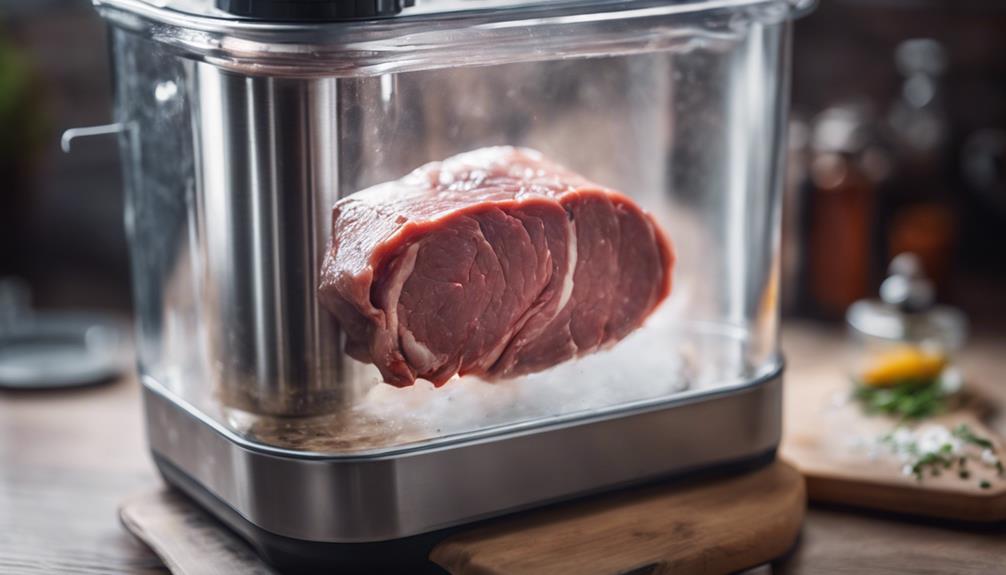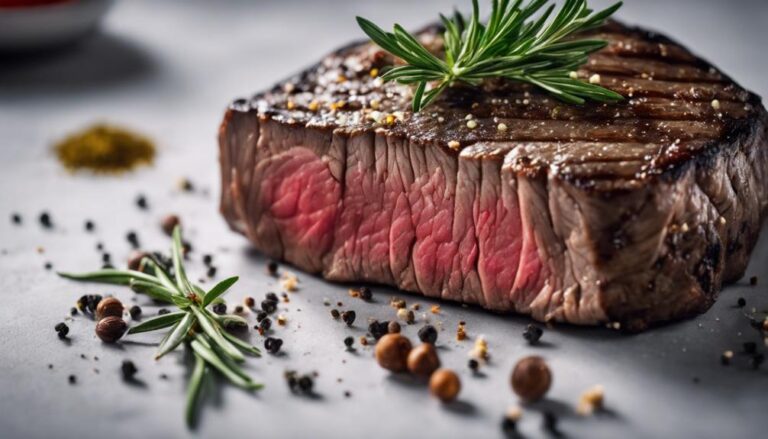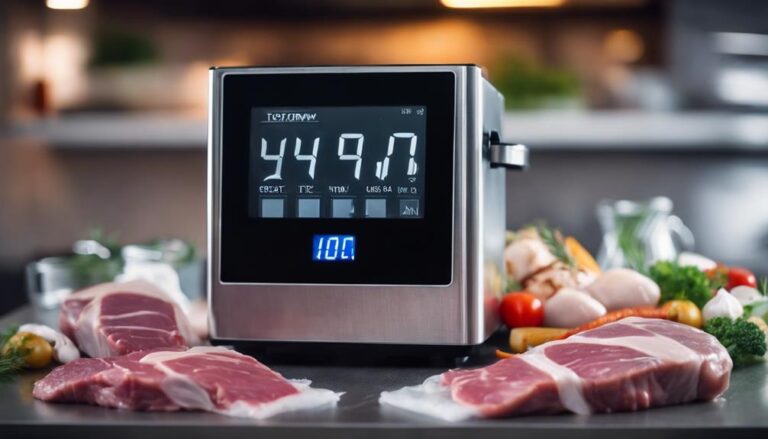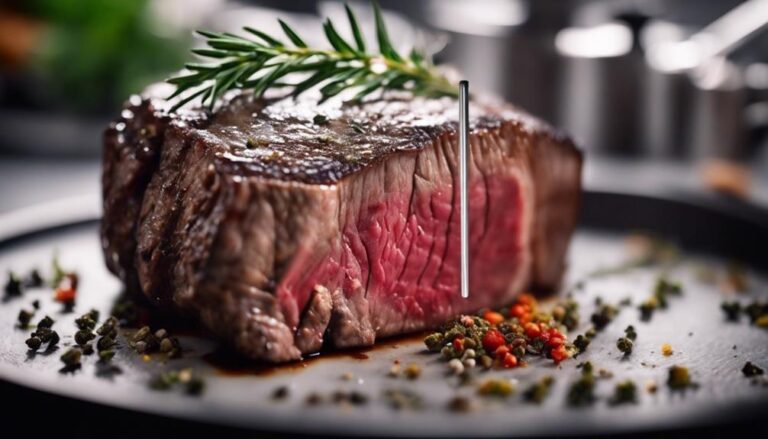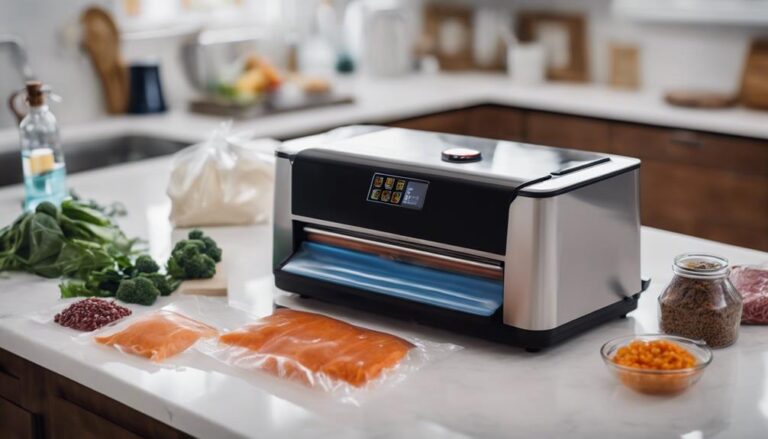3 Best Practices for Sous Vide Cooking Success
To achieve sous vide cooking success, season food well to infuse flavor, use high-quality ingredients, and trim excess fat. Stay vigilant by monitoring water temperature closely throughout the process for precise results. Focus on food safety by cooking at accurate temperatures, sealing food securely, and following recommended cooking times. Master these three practices for impeccable sous vide dishes every time.
What You Will Learn Here
- Season food well for flavor infusion and enhancement.
- Use high-quality ingredients for superior results.
- Monitor water temperature closely for precise cooking.
- Ensure food safety by following recommended guidelines.
- Focus on proper seasoning, quality ingredients, and temperature control.
Ensuring Proper Food Preparation
For optimal outcomes, ensure your food is adequately seasoned and marinated before vacuum sealing to enhance flavor absorption. When preparing your sous vide recipes, take the time to season and marinate your food thoroughly. This step is pivotal in ensuring that the flavors are infused into the ingredients, resulting in a more delicious final dish.
Additionally, using high-quality ingredients is essential to maintaining the integrity of your food and elevating the overall taste of your meal. Before vacuum sealing, remember to trim any excess fat from meats to prevent off flavors and promote a clean cooking process. By following these steps, you set the stage for a successful sous vide cooking experience.
Properly seasoned and marinated food, along with high-quality ingredients and trimmed meats, will contribute to a delectable outcome that will surely impress your guests. Make sure to pay attention to these details to achieve the best results in your culinary creations.
Monitoring Water Temperature Closely
To guarantee precise cooking results in sous vide, closely monitor the water temperature throughout the cooking process. Water temperature is a vital factor in sous vide cooking, as it must be accurately controlled within a narrow range to maintain consistent outcomes. Fluctuations in water temperature can lead to unevenly cooked food, impacting the overall quality of your dishes. Using a reliable immersion circulator with accurate temperature control is essential for maintaining water temperature stability. This device helps in achieving even heat distribution throughout the water bath, contributing to perfect sous vide dishes every time.
Throughout the cooking process, it's important to monitor and adjust the water temperature diligently. By keeping a close eye on the temperature and making necessary adjustments, you can make sure that your food is cooked to perfection. Consistent monitoring and precise temperature control are key to obtaining the best results and maintaining the quality standards expected from sous vide cooking. By following these practices, you can achieve consistent cooking results and impress your guests with delicious sous vide dishes.
Maintaining Food Safety Standards

Ensuring precise temperature control in sous vide cooking is vital for maintaining ideal food safety standards. Sous vide cooking involves cooking food at specific times and temperatures to eliminate pathogens and reduce the risk of foodborne illnesses.
Proper food handling practices, such as sealing food in airtight bags before cooking, are essential to prevent contamination. It's important to follow recommended cooking times for different types of food to guarantee they reach the appropriate internal temperature to kill harmful bacteria.
Maintaining food within the 40F to 130F range during sous vide cooking is critical to prevent spoilage and ensure safety. By adhering to these food safety standards and guidelines, you can confidently serve delicious and safe sous vide dishes to your guests.
Remember that proper temperature control is the key to successful sous vide cooking and maintaining food safety throughout the process.
Frequently Asked Questions
How Do Professional Chefs Use Sous Vide?
When using sous vide, professional chefs maintain precise temperature control, infuse flavors, save time, preserve textures, experiment with ingredients, cook with precision, tenderize proteins, harness culinary creativity, achieve consistent results, and develop rich flavors in their dishes.
What Are the Disadvantages of Sous Vide Cooking?
When you consider sous vide cooking, keep in mind it's a slow process with limited searing, high equipment cost, potential flavor loss, risk of overcooking, lack of browning, food safety concerns, vacuum sealing necessity, texture changes, and moisture retention.
What Are the Principles of Sous Vide Cooking?
To succeed in sous vide cooking, control temperature precisely, manage cooking time, prep ingredients well, infuse flavors carefully, vacuum seal ingredients, circulate water efficiently, use proper equipment, experiment with recipes, maintain texture consistency, and prioritize sous vide safety.
What Is the Secret of Sous Vide?
Maintain constant temperature control to reveal the secret of sous vide. Vacuum seal your ingredients, be precise with timing, infuse flavors, retain moisture, enhance texture, select quality ingredients, balance seasonings, maintain equipment, and prioritize safety for sous vide success.
Conclusion
So there you have it, three key practices to guarantee your sous vide cooking success.
By properly preparing your food, closely monitoring water temperature, and maintaining food safety standards, you can elevate your culinary skills to new heights.
With these tips in mind, you'll be well on your way to creating delicious and perfectly cooked meals every time.
Happy cooking!
